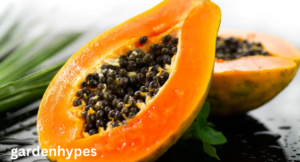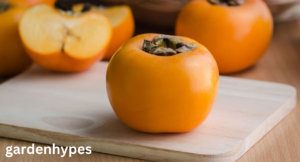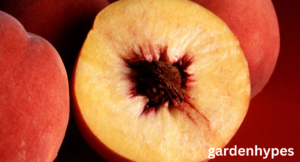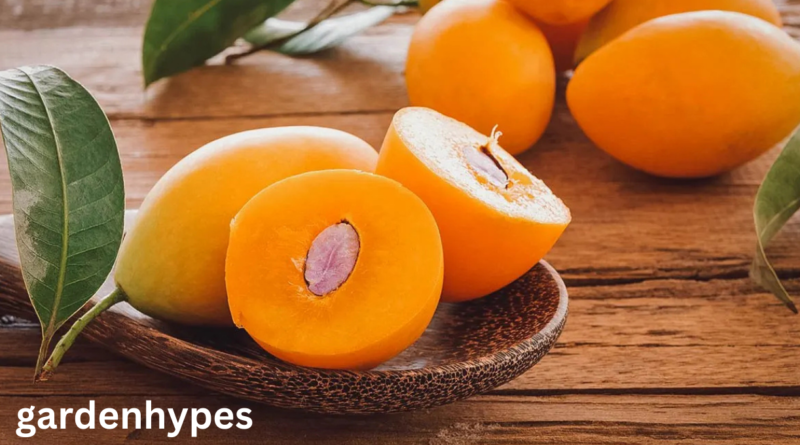Fruits That Look Like Mango Discover Similar Fruits
Introduction to Mango Look-Alike Fruits
Mangoes are known as the “king of fruits,” loved for their bright golden color, juicy sweetness, and tropical aroma. But here’s something interesting—not every golden, oval fruit you see in the market is a mango. In fact, many fruits share striking similarities with mangoes in terms of shape, color, and even flavor. These Fruits That Look Like Mango often confuse shoppers at local markets, especially when varieties come from different regions. Some even get mistaken for mangoes until you take a bite and realize the difference.
click in link Fruits That Look Like Lemons
So, why does it matter to know mango look-alike fruits? For one, identifying them helps avoid confusion when shopping. It also opens doors to trying out new flavors while still enjoying something that feels familiar. Imagine biting into a persimmon thinking it’s a mango—surprise! It’s sweeter, with a unique texture. Or seeing a papaya that looks like a giant mango—only to discover it has its own tropical vibe.
Exploring fruits that look like mango also brings diversity to your plate. Some are sweeter, others tangier, and many come with powerful health benefits. They’re also used in global cuisines, desserts, smoothies, and jams just like mangoes. Whether you’re a mango lover looking for alternatives or a curious foodie, this guide breaks down fruits that closely resemble mangoes, how to tell them apart, and why they deserve a spot in your fruit basket.
Papaya – The Tropical Twin
Papaya is probably the most common fruit mistaken for mango, especially when it’s smaller in size. At first glance, its oval shape and golden-orange flesh create an illusion of a mango. Both fruits share that tropical glow and can easily be confused if you’re not paying attention. However, a closer look reveals differences. Papayas usually have thinner skin that ranges from green to yellow-orange, and inside, instead of a single large seed like a mango, papayas contain multiple small black seeds clustered in the middle.
In terms of taste, papaya has a softer, muskier flavor compared to the rich sweetness of mango. While some people adore its smooth, buttery texture, others find its taste slightly unusual. Despite that, papayas are highly nutritious. They’re rich in vitamin C, folate, and digestive enzymes like papain, which makes them excellent for gut health. Mangoes, on the other hand, shine with higher vitamin A content and natural sweetness.

Both fruits share a similar versatility. Just like mango, papaya is used in fruit salads, smoothies, chutneys, and desserts. In tropical regions, ripe papaya is enjoyed fresh, while green papaya is shredded into salads or cooked in curries. So, while papaya may not taste exactly like mango, its appearance and culinary uses make it a close twin in the tropical fruit family.
Persimmon – The Golden Cousin
Persimmons are another fruit that often confuses mango lovers, especially the Fuyu persimmon. With their bright orange-golden skin and rounded-oval shape, persimmons almost look like small mangoes sitting on a fruit stall. From a distance, their smooth skin and warm hue make them easy to mistake for mangoes.
Taste-wise, persimmons bring a completely different experience. Depending on the variety, they range from sweet and honey-like to slightly tangy. Unlike the fibrous mango pulp, persimmons have a more custard-like texture when fully ripe. They are also eaten fresh, dried, or baked into pies and bread. In Asian cultures, persimmons are often dried and enjoyed as snacks, giving them a completely unique culinary identity.
Nutritionally, persimmons pack a punch. They are high in dietary fiber, antioxidants, and vitamin A, making them excellent for eye health. Mangoes also share similar benefits but differ in sugar content and fiber texture. The real similarity lies in their color and versatility—they both shine in smoothies, desserts, and salads. If you ever stumble upon a persimmon in autumn, you might think you’ve found a small mango, but your taste buds will quickly tell you otherwise.
click in link Fruits That Look Like Lemons

Peach – The Fuzzy Relative
Peaches may not seem like mangoes at first, thanks to their fuzzy skin, but once peeled and sliced, they bear a striking resemblance. Both fruits share a golden-yellow interior with juicy sweetness that makes them favorites for desserts, jams, and fresh snacking. A ripe peach can sometimes trick you into thinking you’re eating a soft mango—especially in smoothies or fruit salads.
The major difference lies in the texture of the skin and seed. Mangoes have smooth skin and a large, flat pit, while peaches are covered in fuzz and have a smaller, grooved stone inside. Flavor-wise, peaches lean toward a slightly tart sweetness compared to mango’s tropical richness. Yet, both bring refreshing juiciness that keeps you coming back for more.
Nutritionally, peaches are loaded with vitamin C, potassium, and antioxidants. They are also lower in calories compared to mangoes, making them a lighter alternative for those watching their sugar intake. Culturally, peaches are celebrated in Western cuisines, often baked into pies or grilled, while mangoes dominate tropical desserts. Despite their differences, peaches remain one of the closest fruits to mango in terms of flesh color, juiciness, and culinary versatility.

Nectarine – The Smooth-Skinned Mango Look-Alike
Nectarines are often considered the “cousin” of peaches, but they also share similarities with mangoes. Their smooth, reddish-orange skin can resemble certain mango varieties, especially when ripe. Cut them open, and you’ll find a golden-yellow flesh that could easily pass for mango pulp at first glance. This makes nectarines a classic mango look-alike fruit.
Flavor-wise, nectarines are sweet and juicy with a slightly tangy undertone. While they don’t quite capture the tropical punch of mango, they are refreshing in their own way. Both fruits are enjoyed raw, blended into smoothies, or used in desserts. In fact, some recipes even swap nectarines for mangoes when the latter isn’t available.
Nutritionally, nectarines are rich in vitamin C, potassium, and dietary fiber, making them excellent for hydration and digestion. They are also lower in sugar compared to mangoes, which makes them a healthier option for those trying to cut down on sweetness without sacrificing flavor. In short, nectarines might not be tropical, but their appearance and pulp make them a worthy look-alike in the mango family.
click in link Fruits That Look Like Lemons
FAQs
- Which fruit looks the most like a mango?
Papaya and persimmon are often the closest look-alikes. Papaya resembles mango in size and color, while persimmon shares the same golden hue and smooth skin. However, each has a unique taste that sets them apart. - Are mango look-alike fruits as healthy as real mangoes?
Yes! Many mango-like fruits are equally nutritious. For example, papaya is rich in digestive enzymes, persimmon is packed with antioxidants, and peaches provide vitamin C. While mango is high in vitamin A and natural sugars, these alternatives balance out with their own benefits. - Can I substitute these fruits in mango recipes?
Definitely! Fruits like peaches, nectarines, and apricots can replace mango in desserts, smoothies, and salads. Papaya works well in tropical recipes, though the taste is slightly muskier. It’s all about experimenting with flavor. - Which mango-like fruit is the sweetest?
Persimmons, especially when fully ripe, are incredibly sweet and sometimes even surpass mango in sugar content. Peaches and nectarines also bring a pleasant sweetness that makes them excellent alternatives. - Where can I find these alternatives?
Most of these fruits are available in supermarkets, especially during their peak seasons. Papaya and guava are common in tropical markets, while peaches, nectarines, and persimmons are widely available in grocery stores. For rarer ones like lucuma or loquat, you may need to visit international or specialty fruit markets.
